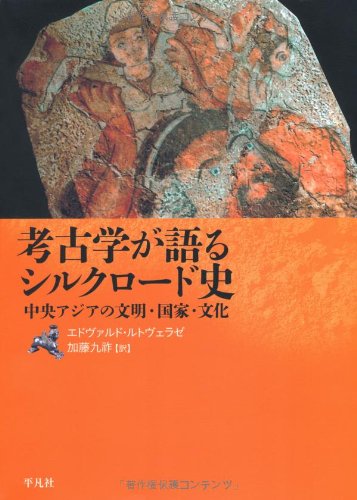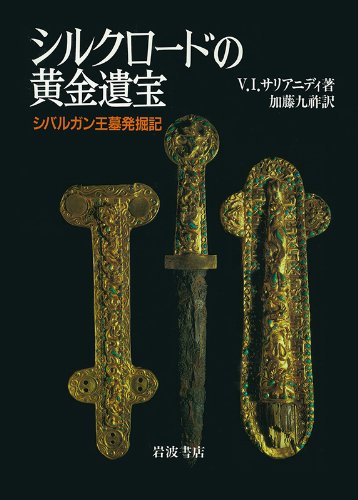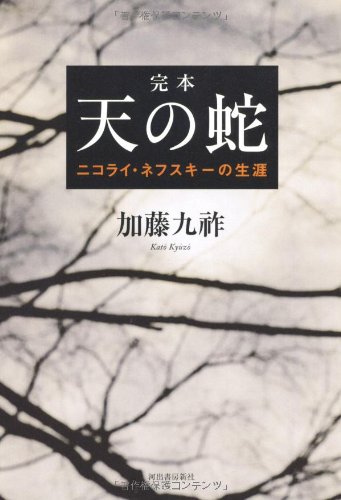8 0 0 0 埋もれた古代王国の謎 : 幻の国ウラルトゥを探る
- 著者
- ボリス・ピオトロフスキー著 加藤九祚訳
- 出版者
- 岩波書店
- 巻号頁・発行日
- 1981
6 0 0 0 考古学が語るシルクロード史 : 中央アジアの文明・国家・文化
- 著者
- エドヴァルド・ルトヴェラゼ著 加藤九祚訳
- 出版者
- 平凡社
- 巻号頁・発行日
- 2011
5 0 0 0 埋もれたシルクロード
4 0 0 0 西域の秘宝を求めて : 埋もれていたシルクロード
- 著者
- ヤクボーフスキー他著 加藤九祚訳
- 出版者
- 新時代社
- 巻号頁・発行日
- 1981
4 0 0 0 シルクロードの黄金遺宝 : シバルガン王墓発掘記
- 著者
- V. I. サリアニディ著 加藤九祚訳
- 出版者
- 岩波書店
- 巻号頁・発行日
- 1988
4 0 0 0 IR コスタ・ヘタグロフ著 『オーソバ』 : オセチア人の民族学的概説
- 著者
- 加藤 九祚
- 出版者
- 国立民族学博物館
- 雑誌
- 国立民族学博物館研究報告 (ISSN:0385180X)
- 巻号頁・発行日
- vol.2, no.4, pp.828-873, 1978-02-02
3 0 0 0 OA カザフ族の遊牧生活
- 著者
- 加藤 九祚 Kyuzo Kato
- 出版者
- 国立民族学博物館
- 雑誌
- 国立民族学博物館研究報告 = Bulletin of the National Museum of Ethnology (ISSN:0385180X)
- 巻号頁・発行日
- vol.8, no.3, pp.653-696, 1983-12-19
2 0 0 0 OA 間宮林蔵の見たギリヤク族(1)
- 著者
- 加藤 九祚 Kyuzo Kato
- 出版者
- 国立民族学博物館
- 雑誌
- 国立民族学博物館研究報告 = Bulletin of the National Museum of Ethnology (ISSN:0385180X)
- 巻号頁・発行日
- vol.1, no.2, pp.305-333, 1976-07-20
Rinzo Mamiya, a Japanese explorer, reached the Siberiancontinent via Sakhalin island in 1809. He is famous for his rediscoveryof the Tatar strait. He also gained immortal fame forhis ethnographic survey of the Gilyak living on the lower Amur,and of the native population of Sakhalin. He described theabove-mentioned peoples in Totatsu Kiko (Travels among the EastTatar), and Hokui Bunkai Yowa (The Story of the Northern Tribes)written in 1910. These works were translated into German andincluded in Nippon, Ph. Franz von Siebold's book, written in 1832.Mamiya's ethnographic descriptions have contributed to theacademical world. Leopold von Schrenck, who did research onthe lower Amur region from 1854 to 1856, and published DieVolker des Amur-Landes, consulted Mamiya's work. Later, at thebeginning of the twentieth century, Shternberg carried out hisfield trip among the Gilyak of the lower Amur region, and contributedmuch to the study of the Gilyak society and religion. Hetoo appreciated Rinzo Mamiya's work.Under the present soviet regime, Chuner Taksami, a Gilyakscholar, and Anna Smolyak, a scholar from Mosco,w, are carryingout a systemetic study of the Gilyak people.I have tried to pursue the ethnographic value of Mamiya'swork and studied it critically referring to work done by laterscholars. This is a first attempt in Japan. There is no doubtthat Mamiya's work has immortal classical value in the field of theethnographic study of the lower Amur people and the nativepeople of Sakhalin island.
1 0 0 0 シルクロード
- 著者
- 加藤九祚 長沢和俊 護雅夫著
- 出版者
- 筑摩書房
- 巻号頁・発行日
- 1983
1 0 0 0 完本天の蛇 : ニコライ・ネフスキーの生涯
1 0 0 0 OA 古代都市ダルヴェルジン・テパ遺跡出土の新資料
- 著者
- 加藤 九祚 トゥルグノフ B. Kyuzo Kato Bahodir Turgunov
- 出版者
- 創価大学シルクロード研究センター
- 雑誌
- シルクロード研究 (ISSN:13455931)
- 巻号頁・発行日
- no.10, pp.31-40, 2017-02-28
Various kinds of artifacts were excavated by late Dr. Kyuzo Kato and Bahodir Turgunov of the Japan-Uzbekistan Joint Excavation Team at Dalverzintepa, an ancient city in southern Uzbekistan. The finds from remains of this city clarified importance of the Buddhism in the Kushan culture. These new finds are the last contribution to us that Dr. Kyuzo Kato, professor of Soka University brought, who initiated Japanese archaeological research in Central Asia and led archaeological excavations at Dalverzintepa, Karatepa and other sites for many years until his passing away at the age of ninety-four in Termez.
1 0 0 0 万年雪の大コーカサス
- 著者
- 加藤九祚 加藤久晴著
- 出版者
- 日本テレビ放送網
- 巻号頁・発行日
- 1981
1 0 0 0 IR 履歴のあらまし : 人間関係的試み(加藤九祚教授・森岡敬一郎教授退任記念号)
- 著者
- 加藤 九祚
- 出版者
- 創価大学
- 雑誌
- 創価大学人文論集 (ISSN:09153365)
- 巻号頁・発行日
- vol.10, pp.5-11, 1998-03




